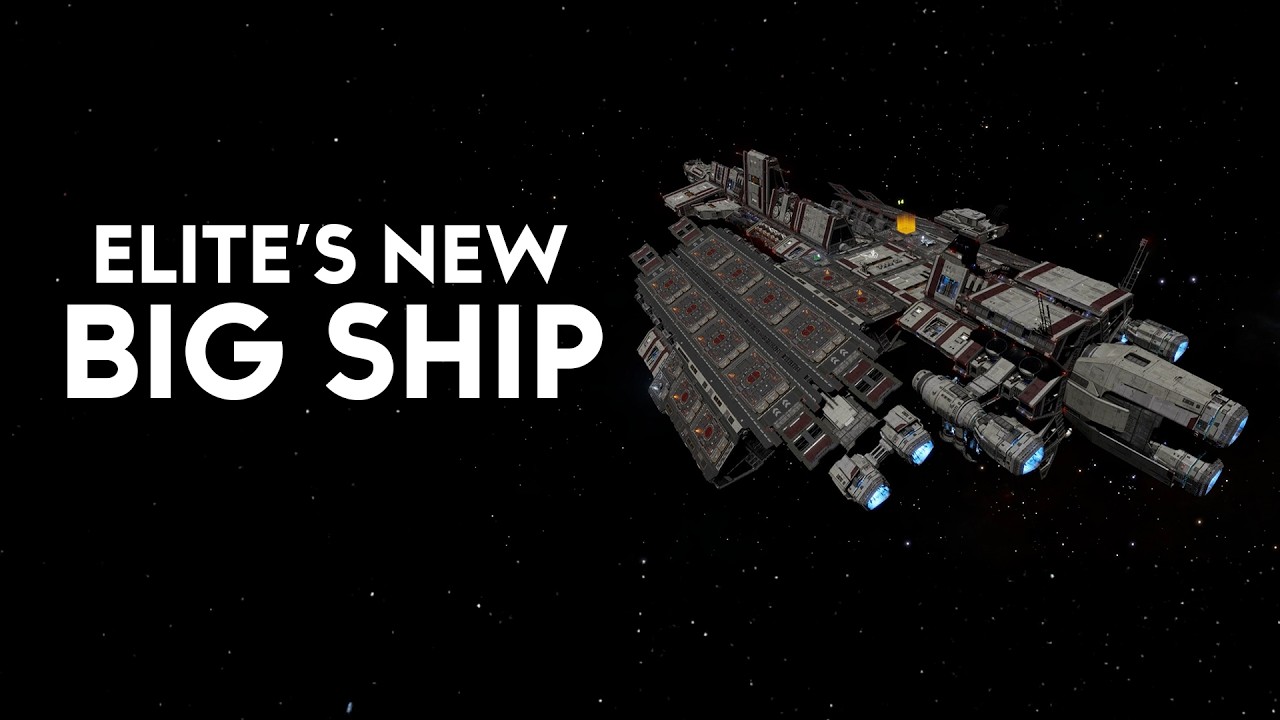The Vanguard update for Elite Dangerous introduces a massive, group-owned squadron carrier that serves as a central hub for coordinated gameplay, along with a hierarchical squadron system, shared banking, and perks to enhance cooperation. These features aim to transform the game into a more MMO-like experience, enabling large-scale, strategic operations across the galaxy.
The upcoming Vanguard update for Elite Dangerous introduces a new, massive squadron carrier, which will be one of the largest ships in the game, surpassing even fleet carriers in size. This carrier functions as a group-owned hub, similar to a guild base, offering a central location for squadron members to meet, coordinate, and operate. Although the specific appearance of the carrier has not been revealed yet, various screenshots and mock-ups suggest a busy, lively deck designed to accommodate multiple ships taking off simultaneously, emphasizing its role as a bustling collective space.
A key feature of the Vanguard update is the introduction of a squadron system that resembles a guild or clan structure. Members of a squadron will be assigned roles based on their ranks, which will determine their capabilities and permissions within the squadron and on the carrier. Higher-ranked members will be able to pilot jumps, select destinations, fuel the carrier, and manage its services. This system fosters a hierarchical organization, allowing for structured cooperation and shared responsibilities among squadron members.
The update also brings a new banking system for squadrons, providing a shared financial resource that can be managed with permission groups. When creating a squadron, players will pay a modest fee, around 10 million credits, and will have access to a bank that initially stores credits. Over time, this bank will expand and include features such as permissions for accessing ships, weapons, and other assets, allowing members to borrow or utilize squadron resources. The system is designed to support various focus areas like mining, trading, exploration, or combat, which can be set by squadron leaders to attract suitable recruits.
Another significant addition is the introduction of perks linked to squadrons, which provide ongoing benefits to members. Each squadron can choose primary and secondary perks, with the latter only active in systems controlled by the squadron’s minor faction. These perks include faster mining fragment collection, increased XP gain against NPCs, reduced synthesis costs, and more. The perks aim to enhance gameplay and cooperation within squadrons, though Frontier is cautious about balancing these features to prevent game-breaking effects.
Finally, the update enhances squadron management with features like leaderboards, bulletin boards for communication, and the ability for players to design their own squadron emblems. The overall direction suggests that Frontier is moving Elite Dangerous closer to a traditional MMO experience, with mobile squadron carriers enabling dynamic, galaxy-spanning operations. This development opens up new gameplay opportunities, allowing for flexible, large-scale cooperation and strategic movement across the galaxy, hinting at an exciting future for the game’s evolution.
